Are you looking for another coin for your collection? If yes, then you should take a look at the 1960 dime. It was struck many decades ago, and it has silver in it. Thus, it’s an interesting coin that would add more value to your collection.
Want to learn more? Continue reading to know the composition, value, design, and history of the 1960 dime.
What Is the 1960 Roosevelt Dime Made Of?

The 1960 dime is also known as the 1960 Roosevelt dime. It was struck in 1960, which makes it more than 60 years old. It is part of the Roosevelt Dime series.
When it comes to design, the obverse features the image of the 32nd president of the United States, Franklin D. Roosevelt, or FDR. You’ll find an olive branch, oak branch, and Liberty Torch on the reverse side of the coin.
The composition of the 1960 Roosevelt Dime is quite interesting. It is made of 90% silver and 10% copper. Today, standard US coins are not made of silver anymore. This means that having a silver dime is quite amazing.
The 1960 Roosevelt dime was made of silver, weighs 2.50 grams, a reeded edge, and
So, you might ask, why was FDR chosen to be featured on the dime? There are plenty of reasons. For one, adding him to the 10-cent coin is a way to honor the great man. It should be remembered that he was the president who led the country through the Great Depression and World War II.
Another reason why the dime was chosen is that FDR was the main figure who helped establish the March of Dimes, an organization dedicated to helping people with crippling diseases.
The former Chief Engraver John Sinnock designed the 1960 Roosevelt Dime. From the time the Roosevelt dime was first struck until now, his design was used, and it is one of the most recognized coin designs in US history.
1960 Roosevelt Dime Varieties
The 1960 Roosevelt dime comes in three varieties. These are the following:
| Variety | Mint Location | Mintage |
| 1960 D Roosevelt Dime | Denver | 200,160,400 |
| 1960 P Roosevelt Dime | Philadelphia | 70,390,000 |
| 1960 Proof Roosevelt Dime | Philadelphia | 1,691,602 |
| Total | 272,242,002 |
In 1960, the US Mint produced more than 272 million dimes, more than what was struck in 1959.
The US Mint produced both regular dimes and proof dimes. The main difference among these varieties is their mint mark.
Here’s a deeper look at the 1960 dime varieties:
1960 D Roosevelt Dime
Year of minting: 1960
Mint Mark: D
Place of minting: Denver
Quantity produced: 200,160,400
Face Value: $0.10 (ten cents)
Price: $2.10 to $2.60 (circulated condition)
Mass: 2.50 grams
Edge: Reeded
Designer: John R. Sinnock
Composition: 90% Silver and 10% Copper
Diameter: 17.90 millimeters
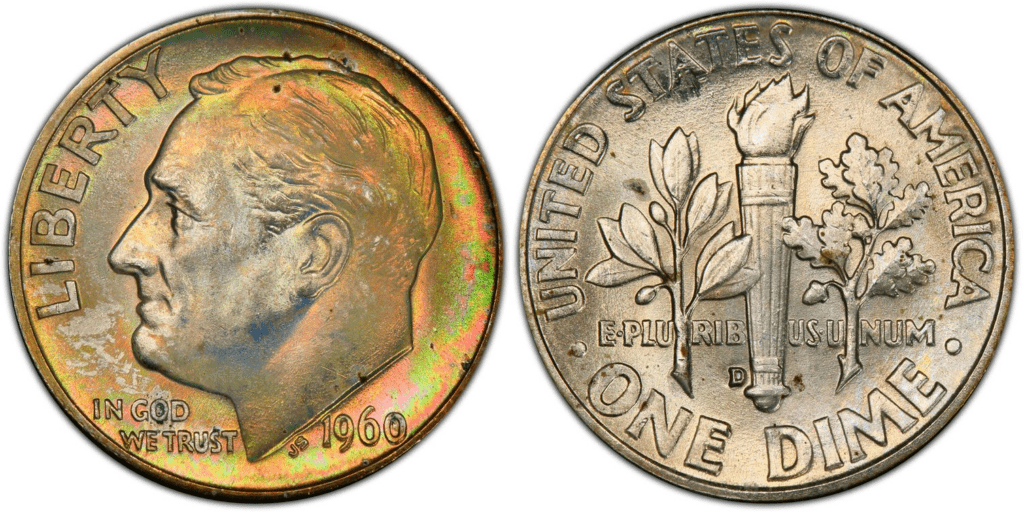
The Denver Mint produced more than 200 million dimes in 1960, which was way higher than the Philadelphia Mint. You should find a lot of 1960 dimes in Mint State. Full Band gems are scarce and highly sought after and may command a higher premium.
1960 P Roosevelt Dime
Year of minting: 1960
Mint Mark: None
Place of minting: Philadelphia
Quantity produced: 70,390,000
Face Value: $0.10 (ten cents)
Price: $2.10 to $2.60 (circulated condition)
Mass: 2.50 grams
Edge: Reeded
Designer: John R. Sinnock
Composition: 90% Silver and 10% Copper
Diameter: 17.90 millimeters
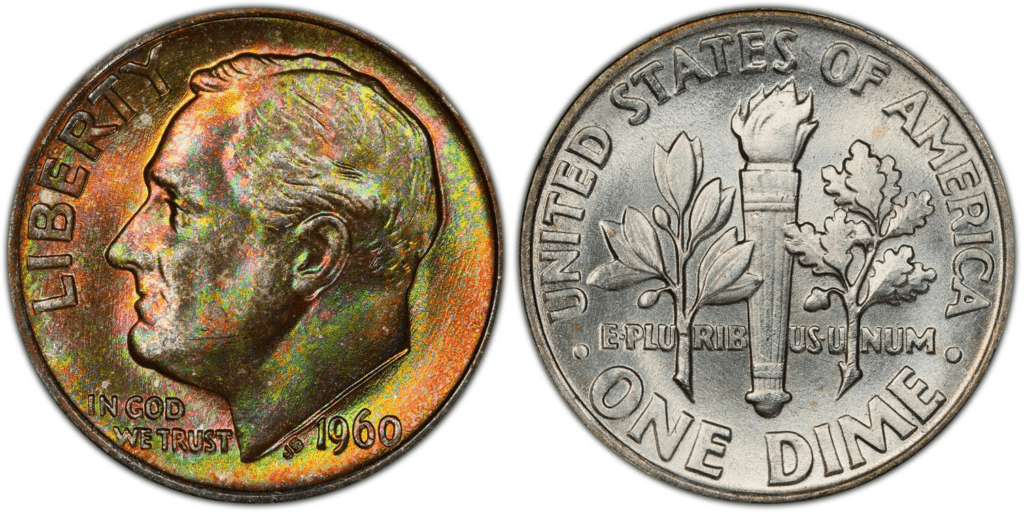
The Philadelphia Mint produced more than 70 million 1960 dimes. You can find many 1960-P dimes in grades up to MS 68 with relative ease. However, finding Full Band or Full Torch gems would be difficult.
A big quantity of 1960 dimes was hoarded right at the time of its issue. However, later, most of them were melted and sold as silver.
1960 Proof Roosevelt Dime
Year of minting: 1960
Mint Mark: None
Place of minting: Philadelphia
Quantity produced: 1,691,602
Face Value: $0.10 (ten cents)
Price: $2.10 to $2.60 (circulated condition)
Mass: 2.50 grams
Edge: Reeded
Designer: John R. Sinnock
Composition: 90% Silver and 10% Copper
Diameter: 17.90 millimeters
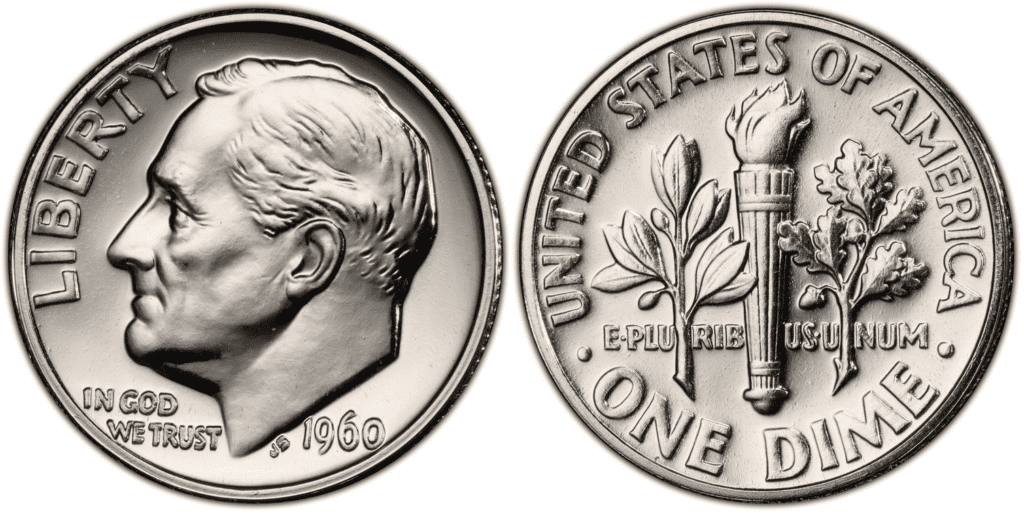
Aside from regular coins, the Philadelphia Mint also produced more than 1.6 million proof dimes in 1960. You should easily find 1960-proof 10-cent coins in grades up to PR 69, but they are not Cameo or Deep Cameo gems.
Thus, 1960-proof dimes with grades of PR 67 and above with Cameo or Deep Cameo designation would surely be pricey.
List Of 1960 Roosevelt Dime Errors
The US Mint released millions of 1960 Roosevelt dimes. With this in mind, there was always a chance for error coins. The US Mint doesn’t want to have error coins, but many numismatists are interested in them because they are unique and, sometimes, rare.
Here are some of the most common 1960 Roosevelt dime errors:
Lamination error
The 1960 dime is made of silver and copper. However, during the production of blank coins, impurities could go into the mix. The impurity won’t mix well with silver and copper. Thus, the coin would peel or crack on its surface upon production.
Here’s an example of a major lamination error on a 1960 dime:
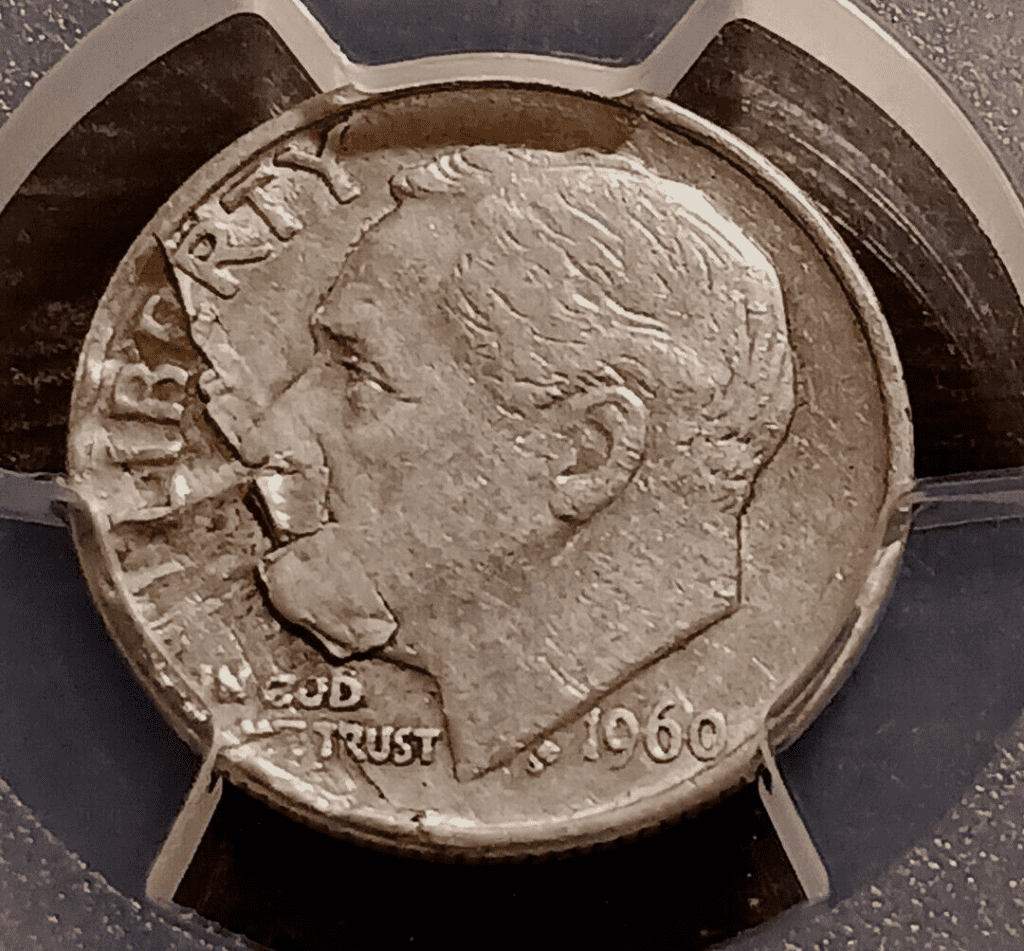
Repunched Mintmark (RPM)
When the mintmark is struck twice on the blank coin, it leaves a doubling appearance on the mintmark. The doubling effect would depend on how far the second strike is from the first strike.
Here’s an example of a repunched mintmark error on a 1960 dime:
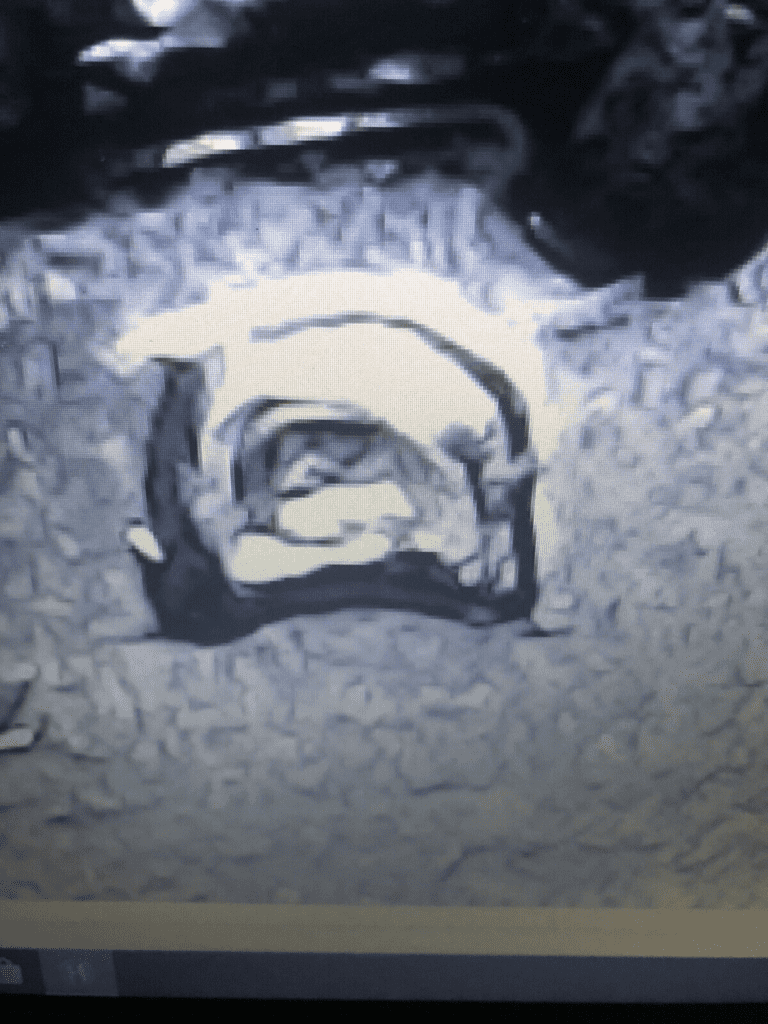
Clipped planchet
A clipped planchet error happens during the cutting of the blank coin. Sometimes, there’s a problem in the metal feeder that the next blank coin to be cut includes a part of the hole of the previous cut. So, you get a curved clipped planchet, as seen in the image below:
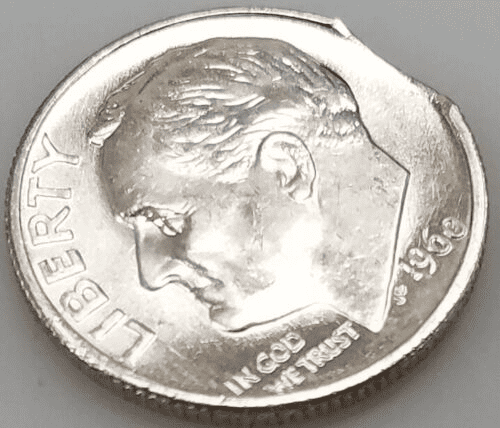
How Much Is 1960 Roosevelt Dime Worth Today?
The 1960 Roosevelt dime has a face value of 10 cents and a melt value of $1.5965. The melt value is higher because of the silver content of the 1960 dime. This value can increase or decrease depending on the market value of silver.
Circulated 1960 Roosevelt dimes may be worth around $2.10 to $2.60. However, uncirculated dimes are more valuable.
Take a look at this chart of auction records for each variety to get an idea of the potential of the 1960 Roosevelt dime:
| Coin | Condition | Grade | Sold date | Sold by | Value |
| 1960 P Roosevelt Dime | Superb Gem Uncirculated | MS 67+ (Full Band) | April 29, 2019 | eBay | $3,450 |
| 1960 D Roosevelt Dime | Superb Gem Uncirculated | MS 67+(Full Band) | February 27, 2014 | Heritage Auctions | $2,233 |
| 1960 Proof Roosevelt Dime | Superb Gem Uncirculated | PR 69 – Deep Cameo | July 20, 2004 | Heritage Auctions | $1,265 |
How Does The Grading System Work?
If you want to establish the value and condition of your 1960 dime, you should consider getting it graded. Once your coin is officially graded, you can dramatically increase its value if it receives a high grade.
Professional numismatists joined in the 1970s and established CoinGrading standards, known as the Sheldon Scale. These numismatists now assign grades at key places on the seventy-point scale, using the most regularly utilized numeric points in conjunction with the original adjective grade. The following are the most common coin grades:
- (P-1) Poor – Indistinguishable and probably damaged; if used, must have a date and mintmark; otherwise, rather battered.
- (FR-2) Fair – Nearly smooth, but without the damage that a coin graded Poor often possesses. The coin must have enough detail to be identified.
- (G-4) Fair – Inscriptions have merged into the rims in some areas, and important elements have been mostly erased.
- (VG-8) Very Good- A little weathered, but all primary design elements are visible, albeit faintly. There is little, if any, central detail left.
- (F-12) Good – The item is very worn, yet the wear is even, and the overall design details stand out clearly. Rims are almost completely isolated from the field.
- (VF-20) Very Fine – Moderately weathered, with some finer features still visible. The motto or all letters of LIBERTY are readable. Both sides of the coin have entire rims separated from the field.
- (EF-40) Extremely Fine – Gently used; all gadgets are visible, and the most important ones are bold. The finer details are bold and clear; however, light wear may be seen.
- (AU-50) Uncirculated – Slight evidence of wear on the coin’s design’s high points; it may have contact marks; eye appeal should be adequate.
- (AU-58) Uncirculated Choice – Slight traces of wear, no severe contact marks, almost full mint shine, and great eye appeal.
- (MS-60) Mint State Basal – Strictly uncirculated; no indication of wear on the coin’s highest points, but an unsightly coin with reduced luster, visible contact marks, hairlines, and other flaws.
- (MS-63) Mint State Acceptable – Uncirculated, but with contact scratches and nicks, little reduced shine, but otherwise appealing appearance. The strike is weak to average.
- (MS-65) Mint State Choice – Uncirculated with great mint shine, little contact blemishes, and exceptional eye appeal. The strike is unusually severe.
- (MS-68) Mint State Premium Quality – Uncirculated with superb luster, no obvious contact marks to the naked eye, and exceptional eye appeal. The strike is quick and appealing.
- (MS-69) Almost Perfect Mint State – Uncirculated with perfect brilliance, a sharp and appealing strike, and extremely good eye appeal. A near-perfect coin with minor imperfections in the planchet, strike, and contact markings (seen only under 8x magnification).
- (MS-70) Mint State Perfect – Under 8x magnification, no tiny imperfections are discernible; the strike is crisp, and the coin is perfectly centered on a beautiful planchet. Rarely seen on a coin, this coin is bright and whole, with original luster and exceptional eye appeal.
1960 dimes would also be designated as either MS or PR. A special category also exists, which is Full Band or not. NGC calls this Full Torch. Aside from that, for proof coins, if they have good background contrast, they can be called Cameo or Deep Cameo.
Where To Buy Or Sell 1960 Roosevelt Dime?
The 1960 Roosevelt dime is available online and in brick-and-mortar stores. Perhaps, the most popular website where you can buy or sell 1960 dimes would be eBay. Then, you have Amazon and Etsy. Some websites specialize in buying and selling coins. These include USA Coin Book, Coin Tracker, and Grey Sheet.
Alternatively, you can visit your local coin shops to see if they have Roosevelt dimes. Aside from that, antique stores and pawnshops might also help. If you can, join auctions as well. Auctions are known to bring out the rarest and most sought-after coins.
FAQs
How many ounces of silver are in a 1960 dime?
The 1960 dime has 0.0723 oz of actual silver weight (ASW).
What does a 1960 dime look like?
The 1960 dime obverse (head) features the image of Franklin Roosevelt facing to the left. On the reverse (tail) side, you’ll find three images: the olive branch on the left, the oak branch on the right, and the Liberty Torch on the center.
Where is the mint mark on a 1960 dime?
You can find the mint mark on a 1960 dime on the coin’s reverse (tail) side. Look for the mint mark at the left side of the base of the Liberty Torch. You should find a D mintmark indicating that the coin was struck in the Denver Mint. 1960 dimes from the Philadelphia Mint don’t have a mint mark.
